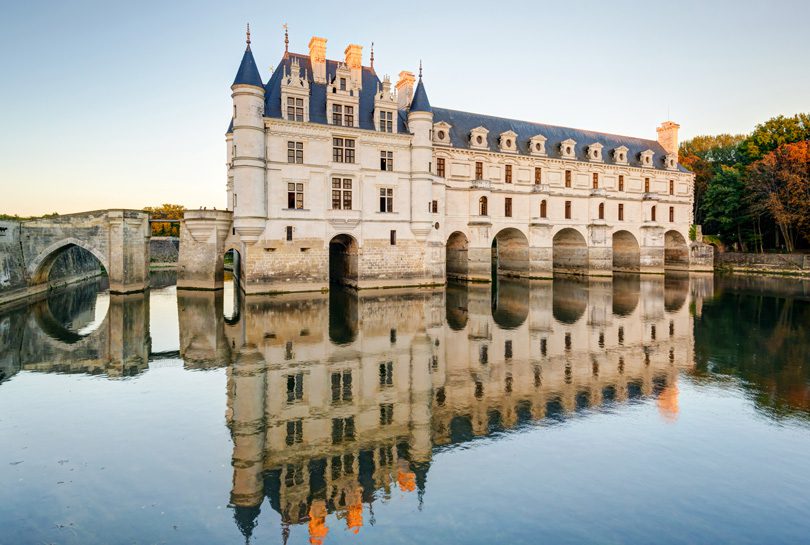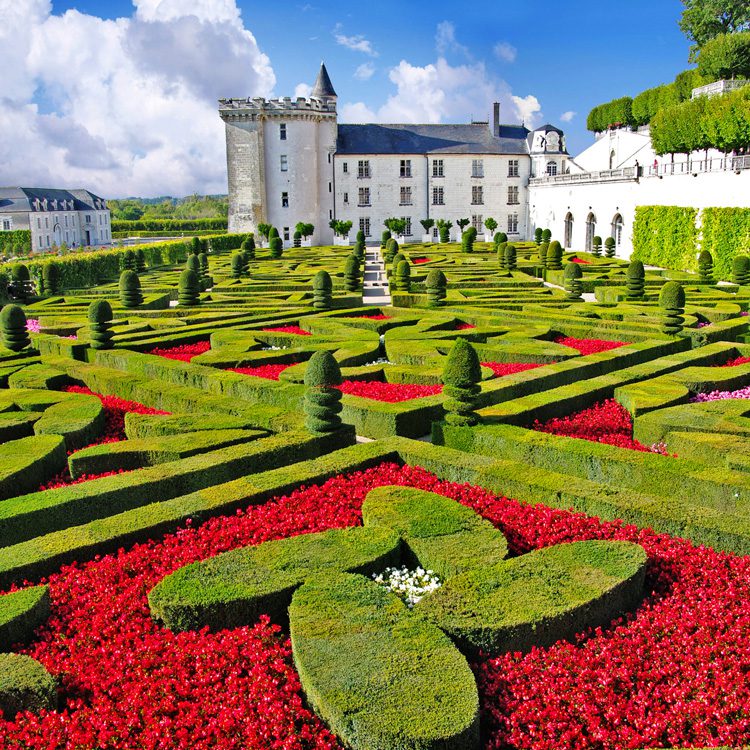
Extravagant châteaux and country villages standing along ancient waterways mark France’s Loire Valley as a must-visit destination on any French vacation. While Paris and the French Riviera may get all the holiday headlines, tourists who roam the region are rewarded with royal residences and a slice of French country life.
Nestled along the Loire River, the town of Amboise is a handy base for touring the area. Just two hours southwest of Paris by train, Amboise and the surrounding countryside make for a slow-paced escape from the big city frenzy.

The tourism highpoint in Amboise is the royal Château d’Amboise. Rising mightily above the valley below, the château’s buildings date from the 15th and 16th centuries. A former residence of kings, the château’s terraces and ramparts offer commanding panoramic views of the river and the town. Among the château’s highlights are the Gothic spire of the St. Hulbert Chapel, the council chamber, King Henri II’s chamber and the Orléans chamber.
Just a short walk from the royal château is Clos Lucé, the home of Leonardo da Vinci, who died in Amboise in 1519. His final residence is home to an exhibit celebrating his life and work.
While Amboise is known for its royal château and as da Vinci’s final home, a visitor can easily find other opportunities to explore the narrow and winding streets of the old town. Along the road from the royal château to Clos Lucé are numerous cave dwellings, former limestone quarries that have been fashioned into tiny homes. The pedestrian commercial center houses shops and cafes. An evening stroll across the bridge to the Ile d’Or provides views of the lighted château looming high above the river.
Amboise is also home to a bustling Sunday market, one of the largest in the region, which draws tourists and locals alike. With vendors peddling everything from leather belts to live chickens, the market is a carnival of sights, sounds and smells.
With many majestic châteaux dotting the valley’s landscape, it can be hard to choose which to visit. While a true architecture or history buff may want to rent a car in order to visit many of the fine estates in the region, a guided day tour is likely the easiest route for the casual tourist. Numerous companies operate from Amboise and visit a sampling of châteaux in the course of a day. The region also boasts several vineyards, and tours and wine tasting opportunities abound.

The grandest of the Loire châteaux, Chambord is a three-story goliath. With more than 400 rooms and almost 300 fireplaces, the château’s rooftop is a mass of chimneys, domes and spires. Chambord also boasts almost 80 staircases, including a fascinating double-helix staircase, which was an architectural marvel of its time.
Constructed in the 16th century, the Château de Chenonceau, quite literally, straddles the River Cher. The château’s gallery, which spans almost 200 feet across the river, was built atop a bridge in the late 1500s. Unexpectedly, the château’s kitchens are located in the base of the bridge piers built into the river. Chenonceau’s rooms are elegantly decorated and display a fine collection of furnishings and tapestries.
Built on an island in the Indre River, the Château Azay-le-Rideau could not be more fanciful. Pointed towers and lacey stonework are reflected in the water, an effect intentionally created by restricting the river’s flow to create a water mirror, highlighting Château Azay-le-Rideau’s architectural splendor.
The château at Villandry is best known for its acres of elegantly manicured gardens. Designed in intricate geometric patterns, Villandry’s gardens are an explosion of color and coordination. With everything from shrubs and hedges to flowering plants and vegetables, these gardens are a spectacular sight.

Back in Amboise, lodgings are plentiful, including the 17th-century manor house, Le Clos d’Amboise. Situated just outside the tourist zone, Le Clos d’ Amboise allows for an easy stroll to local restaurants and shops without the bustling noise of the city center. Rooms are available in the manor house itself or in the home’s renovated horse stables. The back of the hotel hides a peaceful courtyard with landscaped gardens and a heated pool.
One simply cannot visit France without sampling the local delicacies. Several restaurants huddle at the base of the chateau and offer tasty local dishes with views of the chateau looming above. Enjoy the escargot and foie gras while taking in the fine French atmosphere.
With its magnificent châteaux, royal history and the crooked lanes of its villages and towns, the Loire Valley is sure to captivate even the most-traveled visitor.
























